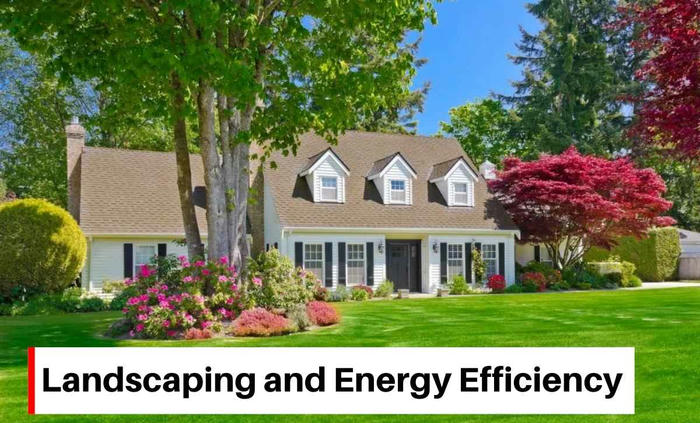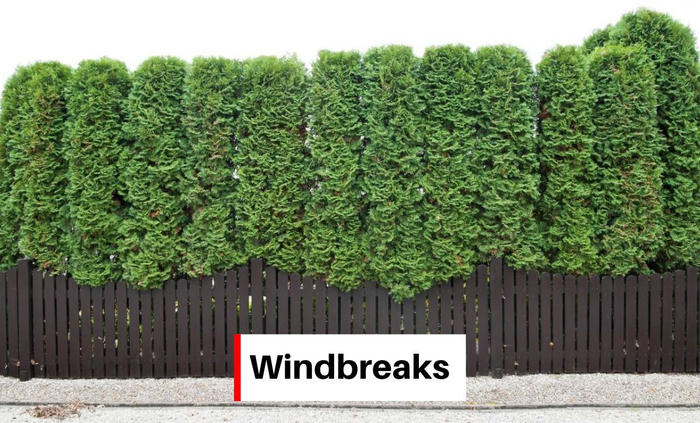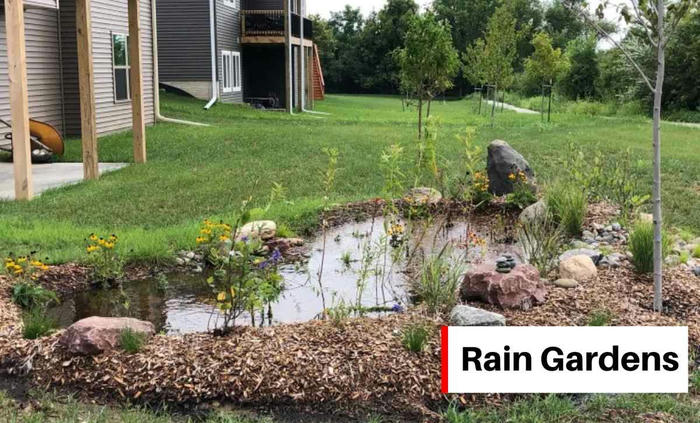Green and Lean: Landscaping Tips to Boost Your Home’s Energy Efficiency
Did you know that your backyard could be the secret to slashing your energy bills? Strategic landscaping isn’t just about aesthetics—it’s a powerful tool for making your home more energy-efficient. From planting shade trees to creating windbreaks, this article explores practical and creative landscaping tips that can help you save energy, reduce costs, and create a more sustainable living space.
The Connection Between Landscaping and Energy Efficiency
Landscaping can significantly impact your home’s energy consumption by regulating temperature, reducing wind exposure, and improving air quality. According to the U.S. Department of Energy, properly designed landscaping can reduce a home’s energy use for heating and cooling by up to 25%. By harnessing the power of nature, you can create a more comfortable and eco-friendly home.

Shade Trees: Nature’s Air Conditioners
Plant Deciduous Trees on the South and West Sides
Deciduous trees, which lose their leaves in winter, are ideal for providing shade in the summer and allowing sunlight to warm your home in the winter. Planting them on the south and west sides of your home can block up to 70% of solar heat, significantly reducing the need for air conditioning.
Use Trees to Shade Air Conditioning Units
Shading your air conditioning unit with trees or shrubs can improve its efficiency by up to 10%. However, ensure there’s enough clearance for proper airflow.
Fast-Growing Tree Options
Consider fast-growing trees like maple, oak, or poplar for quicker results. These species can provide substantial shade within 5 to 10 years.
Windbreaks: Shield Your Home from Harsh Winds
Plant Evergreens on the North and Northwest Sides
Evergreen trees and shrubs act as natural windbreaks, reducing the impact of cold winter winds. A well-designed windbreak can lower wind speed by up to 85%, reducing heating costs by 10% to 30%.
Create Multi-Layered Windbreaks
Combine tall trees, medium shrubs, and low-growing plants to create a multi-layered windbreak. This design maximizes protection while adding visual interest to your landscape.

Ground Cover and Vines: Insulate Your Home Naturally
Use Ground Cover Plants
Ground cover plants like ivy, creeping thyme, or clover can reduce heat absorption by shading the soil around your home. This helps keep the ground cooler, reducing the heat radiated into your home.
Install Trellises with Climbing Vines
Climbing vines on trellises can shade walls and windows, reducing heat gain in the summer. Grapes, wisteria, and clematis are excellent choices for this purpose.
Strategic Placement of Shrubs and Hedges
Plant Shrubs Near Foundations
Shrubs planted near your home’s foundation can act as insulation, reducing heat loss in the winter and heat gain in the summer. Boxwood, holly, and juniper are popular options.
Create Living Fences
Living fences made of dense shrubs or hedges can provide privacy, reduce noise, and improve energy efficiency. Privet, arborvitae, and yew are ideal for this purpose.
Water Features: Cool Your Outdoor Space
Install a Small Pond or Fountain
Water features like ponds or fountains can cool the surrounding area through evaporation, creating a more comfortable microclimate. A 2023 study in Landscape and Urban Planning found that water features can reduce local temperatures by up to 5°F.
Use Rain Gardens to Manage Water Runoff
Rain gardens, which are shallow depressions filled with native plants, can capture and filter rainwater. This reduces runoff and helps cool your property.

Hardscaping: Design with Energy Efficiency in Mind
Use Light-Colored Materials for Patios and Walkways
Light-colored materials like concrete, stone, or gravel reflect sunlight, reducing heat absorption. This can lower the temperature of your outdoor spaces by up to 10°F.
Install Pergolas and Arbors
Pergolas and arbors covered with climbing plants provide shade and reduce heat gain. They also add a charming aesthetic to your landscape.
Sustainable Landscaping Practices
Choose Native Plants
Native plants are adapted to your local climate, requiring less water and maintenance. They also support local wildlife and biodiversity.
Use Mulch to Retain Moisture
Mulching around plants helps retain soil moisture, reducing the need for watering. Organic mulches like wood chips or straw also improve soil health.
Install a Drip Irrigation System
Drip irrigation delivers water directly to plant roots, minimizing water waste. A 2024 study in the Journal of Sustainable Agriculture found that drip irrigation can reduce water usage by up to 50%.
The Financial and Environmental Benefits
Lower Energy Bills
By reducing the need for heating and cooling, energy-efficient landscaping can save you hundreds of dollars annually on utility bills.
Increased Property Value
A well-designed landscape can increase your home’s value by up to 15%, according to the American Society of Landscape Architects.
Reduced Carbon Footprint
Energy-efficient landscaping reduces your reliance on fossil fuels, contributing to a healthier planet. A 2023 report by the Environmental Protection Agency estimated that strategic landscaping could reduce U.S. carbon emissions by 12 million tons annually.
Conclusion
Landscaping is more than just a way to beautify your home—it’s a powerful strategy for boosting energy efficiency and sustainability. By planting shade trees, creating windbreaks, and incorporating water features, you can create a cooler, more comfortable living space while saving money and reducing your environmental impact. Start planning your energy-efficient landscape today and enjoy the benefits for years to come.
